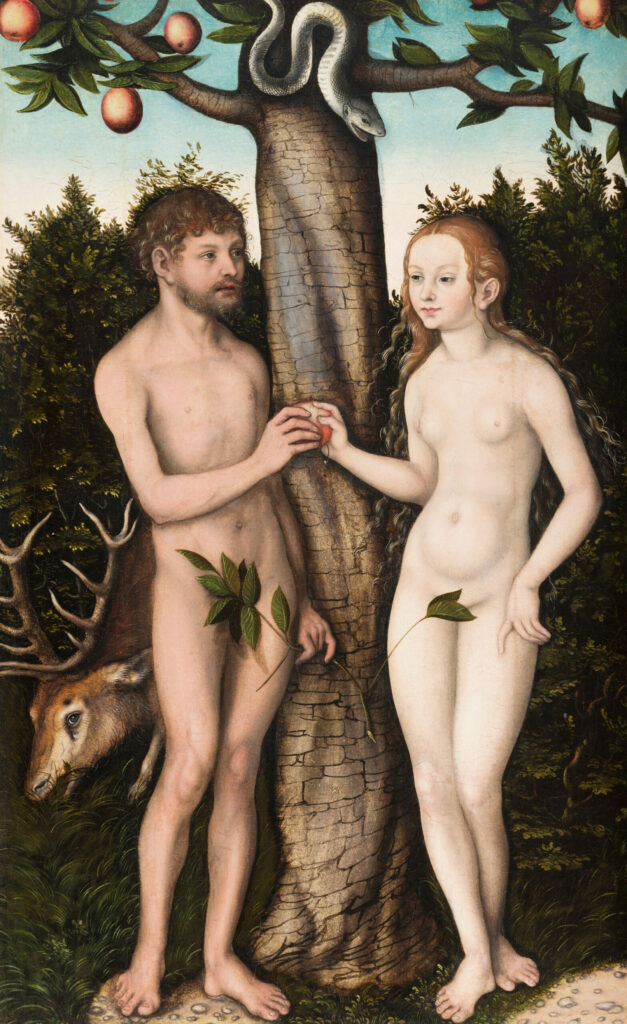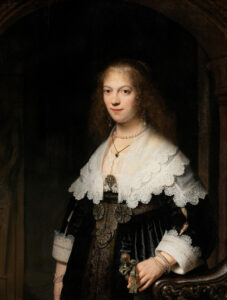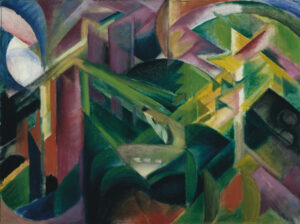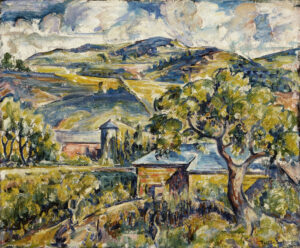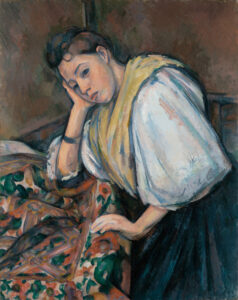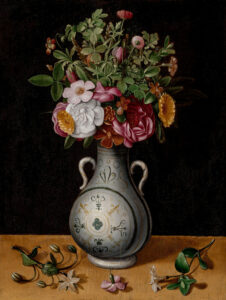Adam and Eve (1528) exemplifies Northern Renaissance art through its depiction of the primordial couple in the Garden of Eden.
Cranach portrays Adam and Eve at the crucial moment of temptation, with Eve offering the forbidden fruit to Adam under the gaze of the serpent coiled around the Tree of Knowledge. The balanced composition places the two nude figures in a lush landscape where every symbolic detail matters: the red apples evoke temptation, the foliage modestly conceals the bodies, while the deer in the foreground recalls the original harmony of Paradise. Cranach’s meticulous technique reveals his Flemish heritage: pearlescent flesh with delicate modeling, precise rendering of the surrounding nature, and that characteristic golden light that bathes the scene in an atmosphere both idyllic and dramatic, capturing the moment preceding the Fall.
Further Information
- Adam and Eve, 1528, by Lucas Cranach the Elder
- 56.8 × 34.9 cm (22 3/8 × 13 3/4 inches), Oil on wood panel (transferred)
- Detroit Institute of Arts, Gift of Anne and Henry Ford II, 62.279, displayed in Medieval Europe and Renaissance
- https://dia.org/collection/adam-and-eve-41598
Lucas Cranach the Elder (1472-1553) remains one of the most influential figures of the German Renaissance and the emerging Protestant movement. Born in Kronach, Franconia, he settled permanently in Wittenberg in 1505 as court painter to Frederick III of Saxony, then to his successors. This privileged position allowed him to develop a prosperous workshop and forge lasting ties with the great reformers, notably Martin Luther, whose intimate friend and official portraitist he became. Cranach revolutionized religious art by creating an original Protestant iconography, while excelling in court portraiture and mythological scenes. His style, characterized by serpentine lines and a refined palette, had a lasting influence on the Saxon school. A prolific master, he produced more than 5,000 works, making the theme of Adam and Eve one of his favorite subjects.

